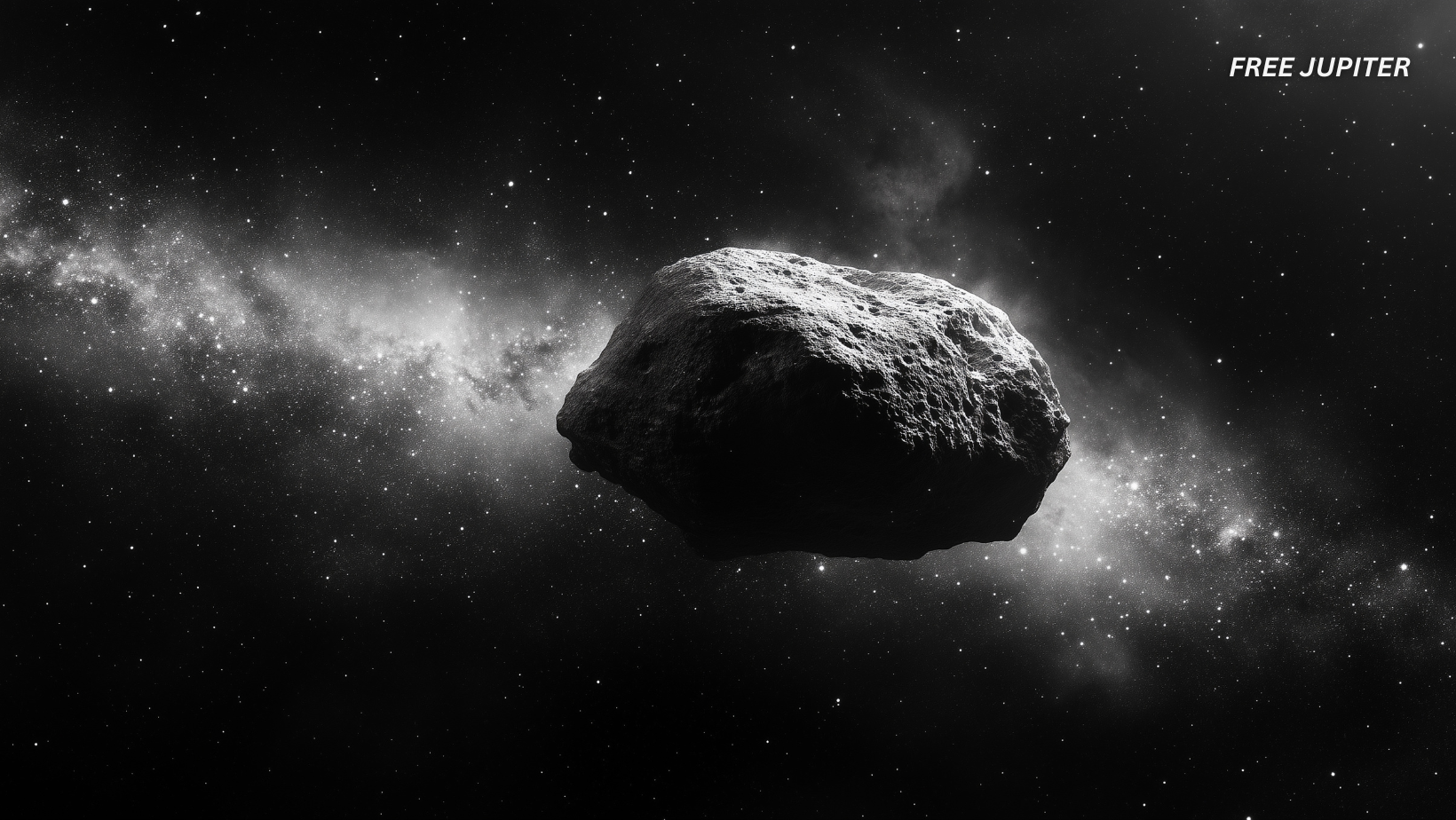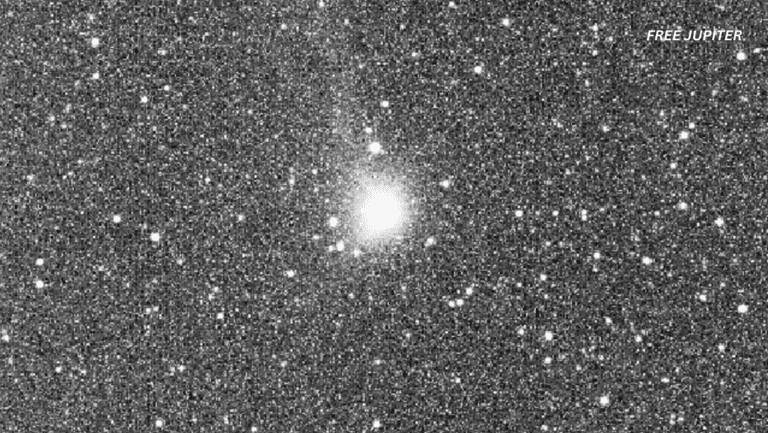Friendly Note: FreeJupiter.com shares general info for curious minds 🌟 Please fact-check all claims—and always check health matters with a professional 💙
Something massive, strange, and ancient may be heading our way. Astronomers have recently spotted a peculiar object zooming toward the inner part of our solar system. It’s called 3I/ATLAS, and it’s turning heads in the scientific community for all the right reasons—and a few wild ones.
So, what’s the big deal?
Well, for starters, 3I/ATLAS is no ordinary space rock. It’s interstellar—meaning it came from outside our solar system. That alone makes it rare. In fact, this is only the third time in recorded history that scientists have seen such an object come our way. Interstellar visitors are so uncommon that every one of them sparks curiosity, debates, and even conspiracy theories.
An Unexpected Space Intruder
3I/ATLAS was discovered in early 2024, and it’s been racing toward the heart of our solar system ever since. But unlike planets, moons, or comets that follow neat and predictable orbits, this object is behaving in a way that’s… strange. It’s taking an unusual route, moving fast—really fast—and shining brighter than expected. These quirks have left astronomers scratching their heads.
Initial guesses pegged it as a comet or asteroid, both of which are common types of space debris. Comets are usually icy and develop dramatic tails when they approach the Sun, while asteroids are more like rocky leftovers from the early days of the solar system.
But 3I/ATLAS doesn’t fit neatly into either category.
Enter Avi Loeb: The Rebel of Astronomy
That’s where Avi Loeb comes in. He’s a Harvard astrophysicist with a reputation for asking questions other scientists shy away from. You might remember him as the guy who stirred controversy by suggesting that another interstellar object, ʻOumuamua, might have been more than just a rock—it could have been a relic from an alien civilization.
Yes, really. And he hasn’t backed down from that idea.
Now, with 3I/ATLAS approaching, Loeb is once again shaking things up. He wrote a blog post explaining his thoughts, theories, and most recent calculations. In his words, while 3I/ATLAS might be a natural object, there’s also the “tantalizing possibility” that it was sent intentionally into our solar system.
Sent. As in, maybe it didn’t just wander here randomly.
That idea has already ruffled some feathers.
Read more: Uranus Is Leaking Much More Heat Than We Thought
What’s So Weird About 3I/ATLAS Anyway?
One of the first oddities Loeb pointed out is the object’s brightness. Based on how much light it reflects, he estimated it to be around 12.4 miles wide—that’s massive for an interstellar object. In fact, it’s hundreds of times larger than ʻOumuamua, which was no longer than a skyscraper.
But here’s the problem: according to what we know about space rocks, a giant like this shouldn’t be the first one we’ve seen. If there were many 12-mile-wide asteroids flying around between the stars, we should’ve spotted dozens or even hundreds by now.
Loeb explains it this way: smaller objects are more common, and we should statistically detect millions of ʻOumuamua-sized visitors before ever coming across one the size of 3I/ATLAS. The fact that we’ve now spotted this bigger object so soon after just two previous interstellar detections doesn’t line up with what we’d expect from random space debris.
Not a Comet, Not an Asteroid… Then What?
Initially, Loeb thought 3I/ATLAS might be a comet—especially due to its brightness. But as scientists gathered more data, they noticed something important was missing: a tail. Comets usually let off gas and dust when they heat up near the Sun, creating those classic glowing tails that stretch across the sky.
But 3I/ATLAS? No tail. No gas cloud. No signs of molecules that usually show up when icy objects melt under sunlight. That’s puzzling.
If it’s not a comet, and it doesn’t behave like an asteroid either, then what is it?
That’s the million-dollar question—and Loeb isn’t ruling out something artificial.
Of course, he’s not claiming it’s a spaceship or making wild declarations about aliens waving at us from across the galaxy. What he is saying, however, is that the door shouldn’t be closed on all possibilities just because they make people uncomfortable.
Read more: Cook Pine Trees Mysteriously Always Lean Toward the Equator—And Science Has an Idea Why
Why the Scientific Community Is Divided
Not everyone is on board with Loeb’s ideas. Some critics argue he’s jumping to conclusions or chasing headlines. In fact, he’s faced censorship in places like Wikipedia and even had one of his academic submissions blocked by a scientific journal because of his more speculative theories.
But Loeb insists that asking bold questions is what science is supposed to be about. “Let’s keep our childhood curiosity,” he urges. “We shouldn’t pretend to be the adults in the room who already have all the answers.”
He makes a valid point: science doesn’t progress by playing it safe. The history of discovery is full of theories that seemed crazy—until they weren’t.
So What Happens Next?
Here’s the good news: 3I/ATLAS is still on its way into our neighborhood, and astronomers will have more chances to observe it up close.
As it gets closer to the Sun, it should get even brighter. If it’s a solid object with no surrounding gas or dust, scientists will be able to confirm that pretty easily. According to Loeb, if the object’s brightness increases in a very specific way—following a mathematical pattern based on how far it is from Earth and the Sun—it will support the idea that it’s not a comet at all.
In other words, we’re about to find out a lot more.
The Big Picture: Why This Matters
Even if 3I/ATLAS turns out to be nothing more than a weirdly shiny space rock, the fact that we’re detecting more interstellar objects than ever before is exciting in itself.
Just a few years ago, the idea of catching something from another star system was the stuff of imagination. Now, we’ve found three in less than a decade. That could mean that space is a lot more crowded than we thought—or that our technology is finally good enough to catch these fast-moving visitors.
Either way, we’re on the edge of something new. We’re starting to peek beyond the boundaries of our solar system and into the broader galaxy. And just maybe, we’re not alone in it.
Read more: Anti-Aging Tech Millionaire Tries Anti-Aging Drug—Ends Up Aging Even Faster
Curiosity Over Certainty
Avi Loeb’s views may not represent mainstream science, but they serve as a reminder of the importance of curiosity in discovery. Whether he’s right or wrong about 3I/ATLAS, his willingness to entertain ideas others dismiss outright is refreshing in a world that often demands certainty over wonder.
As we continue tracking this mysterious object, perhaps the best thing we can do is exactly what Loeb suggests: stay curious. Because in the grand story of the cosmos, we’ve barely turned the first page.










